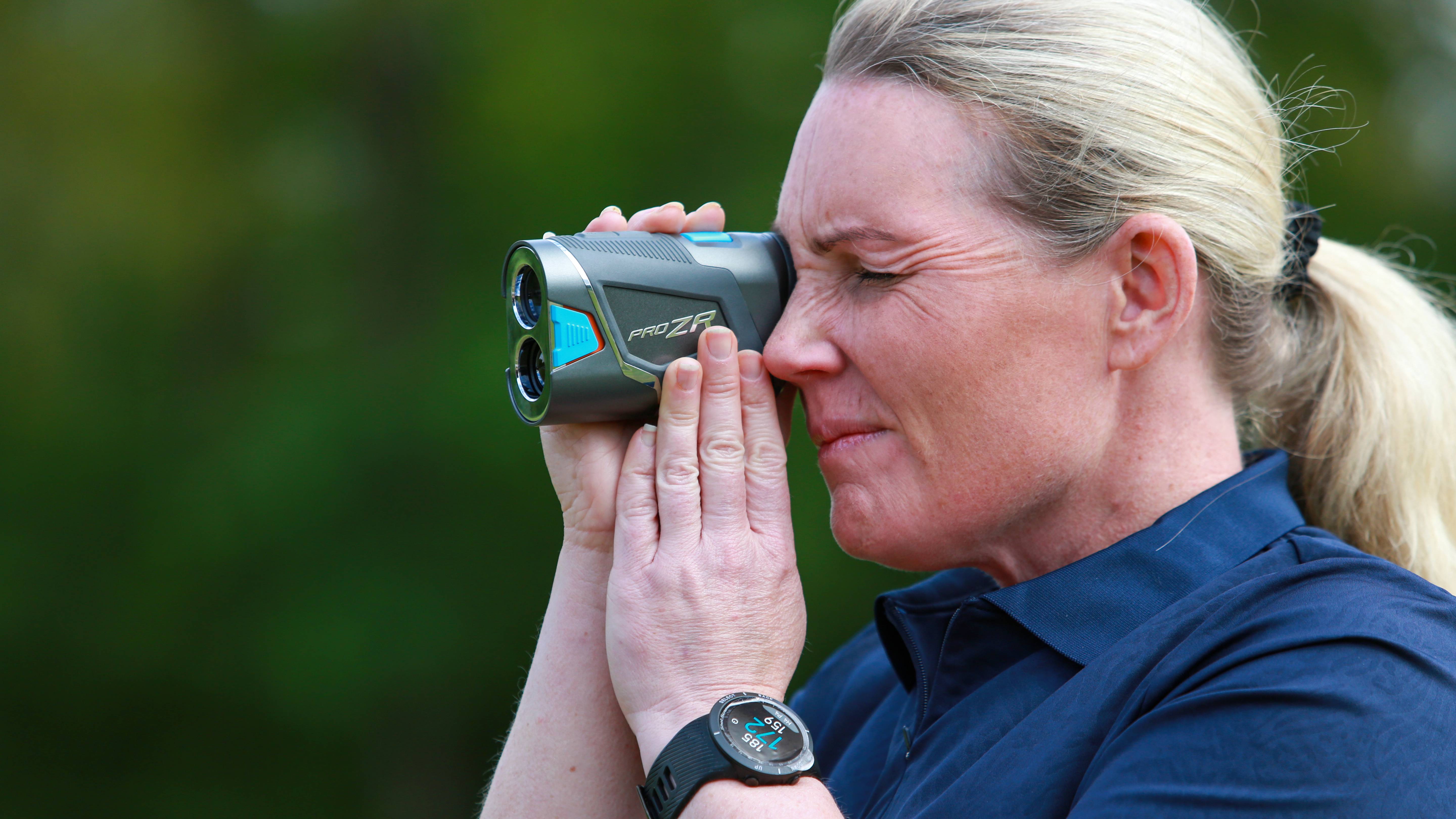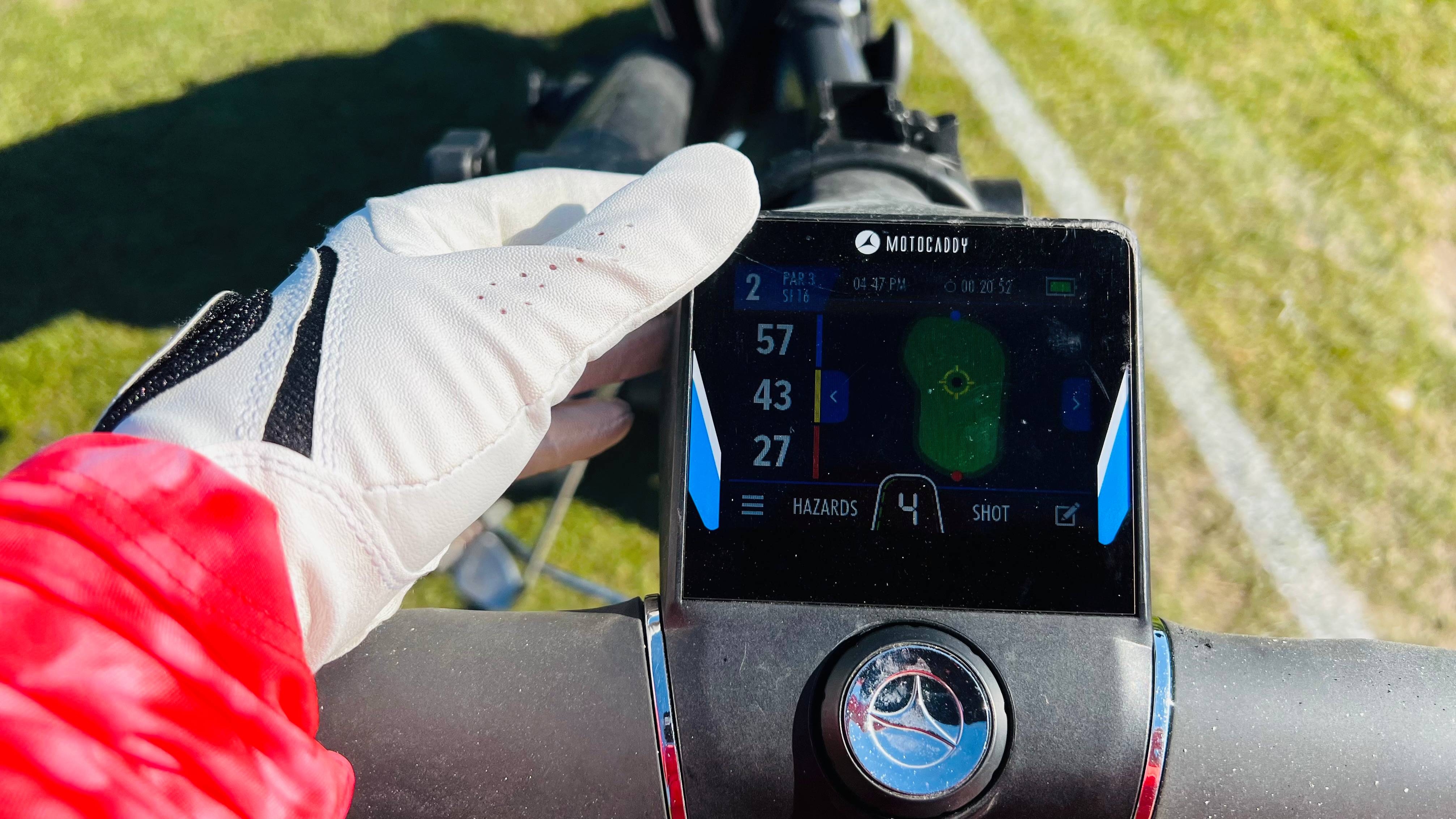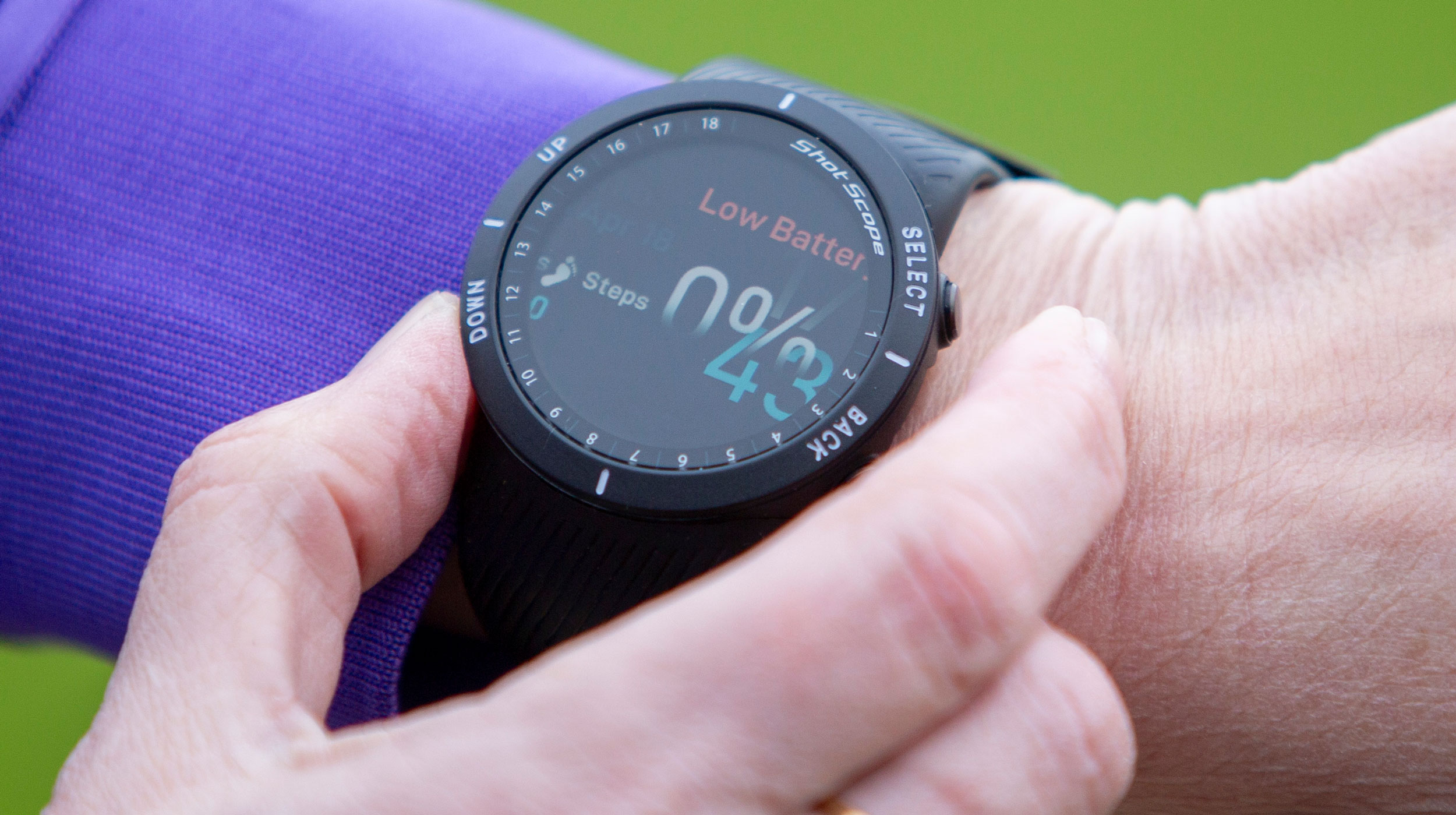Choosing The Right Golf Tech... Should You Go GPS Watch Or Laser Rangefinder?
We break down the pros, cons, and key differences to help you pick the best device for your game


Golf is a game of precision. The more accurate you can be with your approach shots the more likely you’ll take fewer putts from close range, leading to more pars, birdie opportunities and lower scores. The best women in the world are pinpoint accurate with their irons because they know their yardages and have a caddy to give them the correct number.
As amateurs we can’t employ a caddy but we can use technology to our advantage. There are two main leaders in this arena - the laser rangefinder and the GPS watch. But which one is better? We look at the pros and cons of each.
Accuracy
Hands down the laser rangefinder wins this award. It’s pinpoint accurate as you are getting an exact distance to the pin. A GPS watch, in comparison, will only give you a number to the front, middle or back of the green. While this is more than adequate for most, better players will definitely appreciate the difference of knowing the exact number to the pin.
Ease Of Use
The GPS watch arguably has the upper hand here. It’s portable and lightweight to wear. You can also get GPS hat clips if you prefer not to wear a watch or use an electric trolley with in-built GPS.
The laser rangefinder’s major flaw is that you need to be able to hold it steady while you point and click on the pin. Women with shaky hands often struggle to do so, although laser rangefinder’s do have in-built steady function. It’s still common to find women who simply can’t hold one steady enough to use it.

Obstacles
The laser rangefinder has one major flaw - what happens on a hole where you can’t see the pin? It could be a blind approach shot, a dogleg or a hazard like a tree blocking your view. They’ve also been known to struggle to pick up (detect) the pin on dull days, when it is foggy or low light (dawn or dusk.) The GPS device, in comparison, will work no matter where you are positioned on the golf course.
Battery Life
The laser rangefinder is powered by a small lithium battery similar to something you would use for any home electronic device. These are relatively inexpensive to buy and will last for dozens of rounds of golf. If you are sensible and carry a spare battery in your golf bag, when the rangefinder stops working it’s quick and easy to switch the battery out.
Subscribe to the Golf Monthly newsletter to stay up to date with all the latest tour news, equipment news, reviews, head-to-heads and buyer’s guides from our team of experienced experts.
The GPS watch will need charging up on a dock or via a USB plug-in wire after every round. To some users this will seem slightly more laborious, however, if you get into the habit of plugging it in like your phone at night time then it’s never going to run out.

Portability
The GPS watch is small and lightweight. The strap has an ergonomic design that’s comfortable to wear and most users don’t even know they are wearing it. However, some golfers will find that the large round screen does feel a bit cumbersome to wear compared to a traditional more delicate-sized wrist watch.
The laser rangefinder comes in a carry bag that can be clipped onto the side of your golf bag for easy access. It’s small enough to fit into your hands and lightweight, so even if you carry your bag or push a trolley you won’t notice the extra weight.
Price
Pound-for-pound, the GPS watch is slightly cheaper than the laser rangefinder (the two budget brands in our tests are exactly £30 difference in price), however, the price of rangefinders has come down significantly in recent years.
A budget brand will now set you back as little as £130. There’s a proliferation of choices and more competition on the market (see our best golf rangefinders 2025), which means if ultimate pinpoint accuracy is your preference then a laser rangefinder is more affordable now than ever before.
In summary, there are many arguments for and against using a laser rangefinder versus a GPS watch, but ultimately it comes down to personal preference. Is accuracy your number one priority and how easy do you find each device to use? The best way to test what will suit your needs is to borrow a demo from a golf pro shop. Most will keep a stock of a test GPS watch or laser rangefinder for you to try.
The one thing that is certain is that using a distance measuring device will seriously benefit your golf game, bringing a whole new level of accuracy to your club selection and consequently scoring.

Carly Frost is one of the golf industry’s best-known female writers, having worked for golf magazines for over 20 years. As a consistent three-handicapper who plays competitive club golf at Parkstone and the Isle of Purbeck courses in Dorset every week, Carly is well-versed in what lady golfers love. Her passion for golf and skill at writing combine to give her an unbeatable insight into the ladies game.
Carly’s role at Golf Monthly is to help deliver thorough and accurate ladies equipment reviews, buying advice and comparisons to help you find exactly what you are looking for. So whether it’s the latest driver, set of irons, golf ball, pair of shoes or even an outfit, Carly will help you decide what to buy. Over the years she has been fortunate to play some of the greatest courses in the world, ranking Sea Island, Georgia, USA, among her favourite golf resorts. Carly's aptly-named son Hogan is already hitting the ball as far as mum and will undoubtedly be a name to watch out for in the future.
Carly is a keen competitor and her list of golfing achievements are vast. She is a former winner of the South West of England Ladies Intermediate Championship, a three-time winner of the European Media Masters and she once beat an entire start-sheet of men to the title of Times Corporate World Golf Champion. She has played for both the Dorset and Surrey County Ladies first teams and is known for her excellent track record at matchplay.
Carly holds the ladies course record (68) at her home club Parkstone and her lowest competition round (seven-under-par 65) was carded in the pro-am of the Irish Ladies Open at Killeen Castle, playing alongside Solheim Cup superstar Anna Nordqvist. Although her current handicap index has crept up to 3.7 since Covid she has her sights firmly set on achieving that elusive scratch handicap and hopefully playing for her country when she’s 50.
Carly’s current What's In The Bag?
Driver: Callaway Epic Max, 10.5°
Fairway wood: TaylorMade SIM2, 15°
Hybrids: Titleist TS2, 19°, 21°, 24°
Irons: Mizuno JPX900, 5-PW
Wedges: Cleveland RTX, 52°, 56° and 58°
Putter: Scotty Cameron Futura X5
Ball: 2021 Callaway Ladies SuperSoft
You must confirm your public display name before commenting
Please logout and then login again, you will then be prompted to enter your display name.